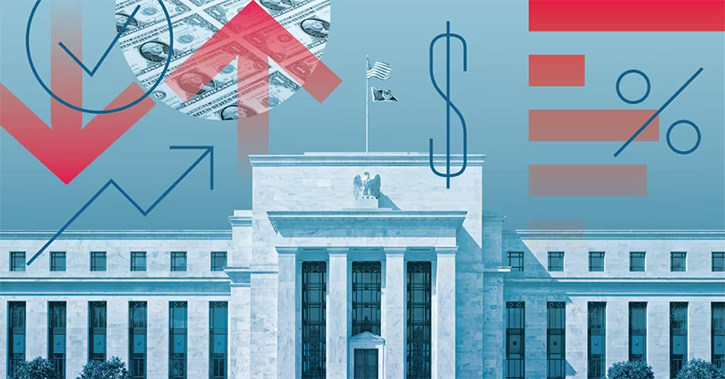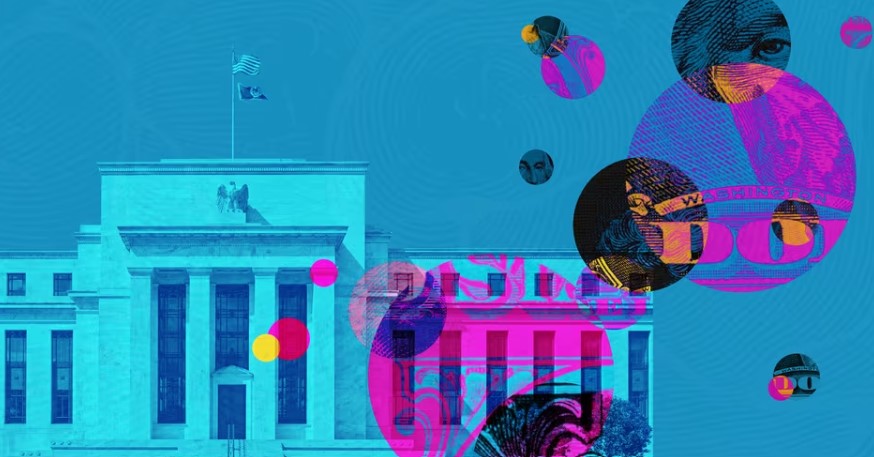Jason Stipp: I'm Jason Stipp for Morningstar. What can we expect for the economy in 2017? I'm here with Morningstar's Bob Johnson, our director of economic analysis, to get his take and forecast.
Bob, thanks for joining me.
Bob Johnson: Great to be here today.
Stipp: Let's start with the big one, GDP in 2017. Your forecast is a bit below others, but also a little bit higher than what you expect we'll see in 2016.
Johnson: Right. I've got a GDP forecast for 2017, full year set of numbers, of 1.9%. That would be up from what I'm thinking we'll get for the full year of 2016, which will be about 1.6%. Both of those numbers are below the recovery average, which is about 2% to 2.25%. So, clearly, we're a little bit below that average. The consensus is quite a bit higher at about 2.3% on GDP. The thought is basically, well, it was kind of a rough year, below trend in 2016 and usually, we see a bounce back in the following year. I don't think for population or a number of reasons that's the most likely case, and then on top of it, there's some hope about stimulus spending would help the numbers along. So, the consensus is considerably higher than my number as they were last year. I was still too high; I had 2% to 2.5% and we're likely to get 1.6%. The consensus was pretty close to 3% last year. So, consensus is a little high again this year.
Stipp: So, let's talk about some of the excitement potentially around infrastructure spending and potentially tax cuts as well. Those could bring some tailwinds, but maybe also some headwinds, you're saying. So, how do you think about those? Are you even factoring in the possibility of those in your forecast?
Johnson: I think right now I'm going with a core of what I would think without tax cuts and without stimulus, but also without the trade being a big negative, which it would likely to be certain trade policies are implemented. If the stimulus really happened in an economy that we're already pretty much at full employment, we might get a lot more inflation from that that would also hurt the numbers. So, I think that a lot of people say, well, look at all the stuff that stimulus would add, let's add a big number for that, and it's a hard number to figure out what exactly it will be and when it will come.
But there's also some negatives that nobody is really thinking about. I mean, I think the market is looking at all the benefits, potential benefits and lining up and saying, look at all it could add and nobody is going, but what if trade policy gets adapted first and they put the tariffs on and all of a sudden, we have reciprocal trade wars and trade looks awful. That's certainly not great news for the economy. Certainly, if we have more inflation, inflation as we've talked about many times, is the true recovery killer, and it certainly looks like next year is lining up to be a year of higher inflation even before Trump. And if we throw some stimulus money and some tax cuts at it, then we could see some very high inflation numbers which would tend to limit the GDP growth.
Stipp: So, it could be that we would see inflation or higher rates happen before benefits of stimulus, if stimulus gets passed, occur?
Johnson: Correct.
Stipp: OK. So, let's talk about inflation then and your expectations for both the core inflation and the headline inflation which vary because of energy.
Johnson: Yes, absolutely. I think the core might not be all that much different this year. I think that last year it probably ended up being about 2.2% on core inflation, that is for 2016. I think for next year it will be in 2.4% to 2.6% range. Primarily labor shortages force wages up in a lot of services industries. That's why my core is a little bit higher. A little bit of it also will be housing may not be as big a negative contributor to that inflation rate. But overall, I think that core will be about 2.4% is probably my best single point guess.
I think the headline number could be as much as 3%. I'm not meaning to panic anybody, but it's certainly clear that most consensus forecasts suggest that oil will be higher next year. I don't usually go back into predicting oil prices, but it seems there's a case for them to be higher next year and certainly, they were relatively flat on a year-over-year basis this year. So, next year, they are likely to be up, which will be a nice swing factor, which could all by itself put us at 3%. A little bit of an offset might be that food prices fell at the very end of the year and that maybe if they continue relatively low that could offset some of that. But I'd hate to bank on that because then you're counting on weather and perfect crop conditions and so forth. So, we've got a one-time benefit that's really kind of helped in here, but will it extend to next year, I don't know.
Stipp: What's the inflation rate percent that starts to worry you?
Johnson: Well, the number I've always said is about 3.8%. I mean, every time we've hit 3.8% inflation, we've had a recession. So, that's the number. I've marked it down in the notebook, so I remember it's on most of my graphs on inflation. But that seems to be the magic number. I think it's because people usually wage increases of 2% to 2.5% and so they can live with that. And if they have that and you have to deal with 4% inflation, that's when it gets to be painful.
Stipp: OK. And what does that mean also relatedly for Treasuries and where you expect 10-year to end up?
Johnson: I'm surprised you'd even ask our forecast as everybody else's haven't been too good. I mean, last year on this interview I said that the 10-year Treasury would be 3% to 3.5% based on higher inflation. Well, we got the higher inflation, the Treasuries didn't get all the way there.
Stipp: But they've started to work their way there.
Johnson: They've started to work their way there. I think that 10-year Treasury will probably end the year at about 2.6%. I think that next--and I had a forecast, to be honest, at 3% to 3.5%, which paradoxically is what I'm going to use for next year too--we've said 2.5% or so core inflation plus 1%. I think that longer-term it has to be core inflation plus 2%, but I think we're going to work our way back there slowly. But I'm thinking 3.5% is a real possibility for next year. But like I say, I've been wrong on this one before.
Stipp: And when looking at the employment market, you've often spoken about how that is highly correlated to GDP. So, your employment forecast is in line with where GDP is, but a little bit lower.
Johnson: Right. We always leave a little bit of room for productivity, and we had a year where there wasn't productivity growth. So, I'm imagining maybe next year won't be necessarily the world's best for employment growth. But I think we'll end up relatively similar, about 190,000 jobs a month. That's where I think our average is going to turn out to be for 2016, and I think it's about what I'd use for next year. So, I think that's pretty consistent with the GDP rate. I mentioned low productivity last year. Maybe we could get a little bit more this year. So, I've got a little bit higher GDP forecast and about the same employment.
Stipp: And when we look at the housing market, you're a little bit more optimistic for next year?
Johnson: Yeah. I'm thinking we might get housing starts up about 10% or so. And I think that housing is one of the bright spots. Demographically, we've got into that situation where we've got more of those 30- to 35-year-olds entering the market just from the birth rates that we can see. So, we know that market is going to be a little bit more favored toward housing. That's why we've all been bullish. So, I think--and we didn't see that so much this year and I was one of the people who was relatively negative on housing starts last year--I'm thinking about 10% for next year, which is now actually pretty close to consensus. The big worry there would be higher interest rates stalling that out and the affordability is really being hurt by these higher rates. Our hope is that we see a little bit of a bump as people try to anticipate that and that keeps the market moving along, if you will.
Stipp: Well, Bob, we'll look forward to checking all the data as it comes in in 2017 with you. Thanks for joining me today.
Johnson: Thank you.
Stipp: For Morningstar, I'm Jason Stipp. Thanks for watching.





















